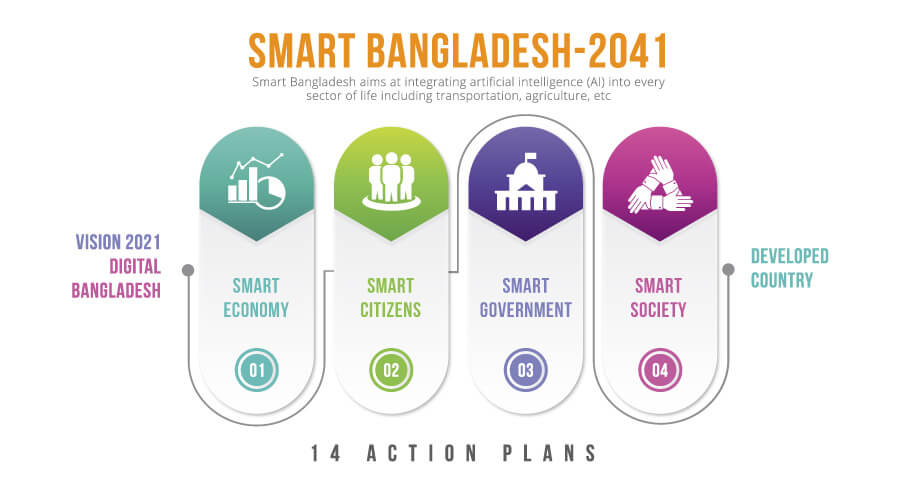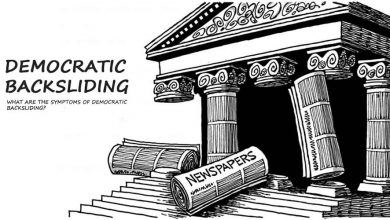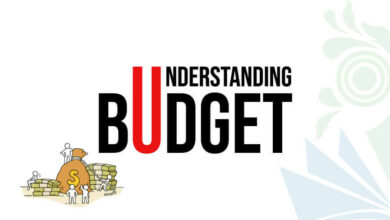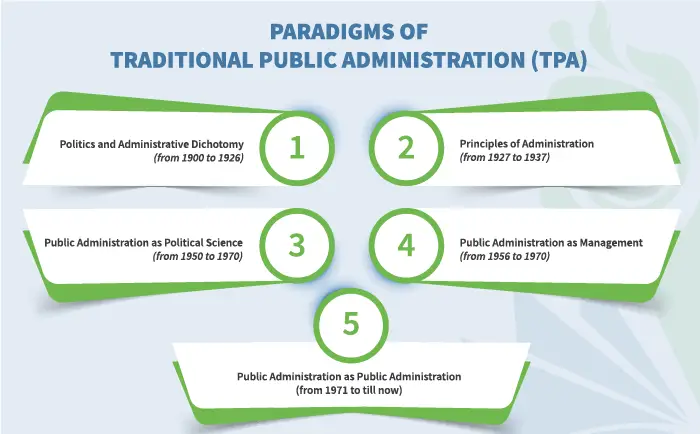Smart Bangladesh 2041 (4 Bases & 14 Action Plans)
The government of Bangladesh has taken initiative to build a ‘Smart Bangladesh’ based on advanced information technology in the country. Smart Citizens, Smart Economy, Smart Government, and Smart Society these four bases are fixed to make the country ‘Smart Bangladesh’. Prime Minister Sheikh Hasina announced that Bangladesh will turn into a ‘Smart Bangladesh’ by 2041. The government will make Bangladesh a developed country where a higher economy, advanced technology, and a new nation will be established by the year 2041. Every citizen will be skilled in using technology, economic activities will run through using technology, the government will be technologically smart, the whole society will be technologically smart, and Bangladesh will be a Smart Bangladesh.
The government will take fourteen steps to implement smart Bangladesh which has been decided to implement 14 action plans to implement the government’s next vision ‘Smart Bangladesh-2041’. Prime Minister Sheikh Hasina outlined the future of Bangladesh after Digital Bangladesh. Under the direction of Prime Minister Sheikh Hasina, the ‘Smart Bangladesh Task Force’ would be established with the goal of achieving Smart Bangladesh by 2041.
14 Action Plans to Implement “Smart Bangladesh-2041”
- Set up Bangladesh as a knowledge-based economy and innovative nation that will be implemented by the country’s information technology division.
- Take on self-employment-based training activities to build an inclusive digital society and bring backward marginalized people into the mainstream of development.
- Enduring laptop support activities for students under ‘One Student, One Laptop, One Dream’ to ensure online activities of students.
- Set up Digital Leadership Academy to build a smart and ubiquitous government.
- Set up Interactive School for Start-up Educators of Tomorrow.
- Ready up enterprise-based businesses as investment-friendly start-ups to contribute to the GDP of small, cottage, small and medium enterprises
- Construction and management of Bangladesh Knowledge Development Park.
- Foundation of Center for Learning Innovation and Creation of Knowledge (CLICK)
- Foundation of Agency for Knowledge on Aeronautical and Space Horizon
- Establishment of Self-Employment and Entrepreneurship Development (SED) Platform
- Generate government service and infrastructure-based entrepreneurs in the Service Aggregator Training (SAT) model
- Bring all digital services to a centrally integrated cloud
- Data Security Act, Sheik Hasina Institute of Frontier Technology (SHIFT) Act, Innovation Design and Entrepreneurship Academy (IDEA) Act
- Digital Service Act, Agency for Knowledge on Aeronautical and Space Horizon Law, and Digital Leader initiative
On the Way to Smart Bangladesh
The first goal of Smart Bangladesh is to build skilled human resources. Bangladesh is progressing along the path of development with the intention that its youth will receive technical education in addition to certificate-based education, making them trained in human resources. Twelve high-tech parks are being built at the district level, among the 92 high-tech parks that Prime Minister Sheikh Hasina is building nationwide. Many young people living in rural areas will be supported by high-tech parks. The construction will shortly be finished. Here, a thousand youths will receive training every year. The ICT department is arranging training for the for youth to build skilled manpower by mixing creativity with technology. Although the government has been planning to build a ‘Smart Bangladesh’ by the year 2041 by developing the IT sector and even declaring 2022 as the year of IT products. Bangladesh has accomplished the aim of ‘Digital Bangladesh through establishing a four-lane highway, six-lane highway, Metro Rail, Karnaphuli Tunnel, Rooppur Nuclear power plant, Bangabandhu Satellite, online activities for the students, the laptop support program for the students. Now, the next aim is to accomplish ‘Smart Bangladesh’ which is being implemented by the ICT Division.

1. Smart Economy
An economy that is based on technology, resource efficiency, sustainability, and high social welfare where the usage of technologies like the Internet of Things (IoT), sensors, location systems, robots, and Artificial Intelligence (AI) are used in economic sectors. With the overarching objective of enhancing everyone’s quality of life, it adopts innovation, and new entrepreneurial ventures, boosts productivity, and promotes competitiveness. Smart Economy is not only about bringing information technology into economic sectors but rather more about creating and using knowledge through technology. Sensors should be used for the soil, water, light, and moisture, for temperature management, and Precision irrigation and precise plant nutrition are also needed. It is technology-based, closely connected, and uses ICT applications for economic advancement, urban planning, and public health improvement. The combination of increasing innovation and higher production, efficiency, and competitiveness results in this. Numerous innovative flexible work arrangements and start-ups define it. In addition to producing more goods and services with less energy and pollution, the smart economy is predicted to have positive social effects. The ultimate goal is to increase the quality and quantity of the products.
2. Smart Government
Smart Government is about using technology to facilitate and support better planning that implies simple, moral, accountable, responsive, and transparent governance. It is about improving the transforming the ways and democratic processes that public services are delivered. It’s a brand-new style of government that depends on information and communication technologies. And it is citizen-centric, performance-focused, and data-driven. The concept of Smart Government relies on communication networks and consolidated information systems. It is a public policy that takes aims at lifting people’s happiness by utilizing ICT (Information and Communication Technology) in providing public services. Corruption is one of the main challenges in government in developing countries, it has been considered one of the most prevalent and persistent Obstacles in improving economic growth and raising the standard of living for people all across the world. Not only does corruption impede economic development, but it also poses a risk to effective government. The ultimate goal of Smart Government is to increase happiness, morality, rationality, transparency, and connectivity and reduce corruption.
3. Smart Citizens
The term ‘Smart Citizens’ refers to the digitally literate persons who take advantage of technology in order to engage in a Smart City environment, address local issues, and take part in decision-making. Smart Citizens empower communities to better understand their environment by offering an alternative to centralized data production and management. Together with smart citizens, smart cities ought to be constructed. The government provides the tools and knowledge to foster citizen engagement through participatory data collection, analysis, and action. Smart citizens are active digital citizens who contribute their data, participate in e-governance and become part of connected communities where information technology is combined with infrastructure, architecture, places everyday objects, and our own bodies to address social, economic, and environmental problems.
Read More: BARD (Bangladesh Academy for Rural Development)
4. Smart Society
A smart society successfully harnesses the potential of digital technology and connected devices and the use of digital networks to improve people’s lives and generate and use knowledge to be more successful. The majority of research on smart society focuses on how technology is used to support human activities, particularly in cities. The most important thing in a Smart Society is that people experience the benefits of what the intensive coevolution of digital and analog, virtual and physical, online and offline will bring them. Being smart requires large-scale data exchange that is purposeful, that solves known problems, and potentially joins up different aspects of life in a society. Perhaps it’s accurate to say that for a society to become smart, the players involved must have a greater vision and their vision must extend beyond the capabilities of technology. In addition to embracing technology, a smart society should ruthlessly eliminate all social ills.
Smart Bangladesh and IR 4.0
The fourth industrial revolution (in short 4IR or IR 4.0) is set to bring about a new era of technological advancement and innovation. Bangladesh, a country in the South Asian region, is keen on taking advantage of this opportunity by developing its own smart city infrastructure and digital economy. The government has already started investing heavily in technology-driven projects such as e-governance initiatives, smart grids for energy management systems, artificial intelligence (AI) based solutions for healthcare delivery systems, etc. In addition to these investments made by the government itself, private companies have also been encouraged to invest in research & development activities related to 4IR technologies such as blockchain or robotics.
Smart Bangladesh’s commitment to embracing 4IR or IR 4.0 technologies can be seen from various perspectives;
- Firstly it will help them create an environment that encourages technological innovations that are beneficial both economically and socially;
- Secondly, it will enable them to become more competitive internationally through increased efficiency & productivity gains;
- Thirdly it will provide job opportunities for their citizens.
Implementing, it would eventually lead to higher living standards across all strata of society including rural areas where access levels are low currently due lack of basic infrastructural facilities needed to support technology advancements like internet connectivity, etc.; last but not least they could even become regional leaders in terms of innovation if they continue with their current efforts at implementing cutting edge technologies within their borders.
In termination, it can be said that there exists an immense potential between Smart Bangladesh’s vision towards becoming a digitally advanced nation via embracing Fourth Industrial Revolution (4IR) Technologies and its implementation capabilities. With the right kind of policies being implemented along with proper investment strategies, Bangladesh could soon emerge as one most technologically advanced countries within the South Asia region.
Vision 2021, Digital Bangladesh & Smart Bangladesh 2041
Bangladesh is a developing country and in the last few decades, it has seen tremendous growth in its economy. To ensure that this trend continues, Bangladesh’s ruling government has taken several initiatives to promote economic development. The most prominent of these are Vision 2021, Digital Bangladesh 2041, and Smart Bangladesh 2041.
The main objective behind Vision 2021 was to achieve self-sufficiency by focusing on industrialization and encouraging foreign investment into the country. This initiative aimed at creating an environment conducive for businesses so that they can expand their operations within the country and create more jobs for local people while also helping increase exports from Bangladesh thus boosting its economy as well as generating revenue through taxes paid by companies operating within its borders.
Digital Bangladesh 2041 was another important step towards achieving economic progress with a focus on digitizing all sectors of society such as education, healthcare, etc., thereby improving access to services provided by them while also increasing efficiency which would lead to further cost savings due to reduced overhead costs associated with manual processes being replaced with automated ones powered by technology.
Finally, Smart Bangladesh 2041 aims at integrating artificial intelligence (AI) into every sector of life including transportation, agriculture, etc., making use of data collected from various sources like sensors or cameras installed across different parts of cities or rural areas enabling better decision making based on real-time analytics derived from such data sets leading up ultimately leading up eventually resulting in improved quality standards & increased productivity overall.
All three initiatives have been instrumental in driving forward economic development within the nation thus far but there is still much work left ahead before we reach our desired goals set out initially under each one respectively hence why continued effort must be made if we are truly serious about achieving success moving forward & ensuring sustainable growth over long periods rather than short bursts here & there which could potentially prove detrimental later down the line if not managed properly now itself during times when things seem relatively stable currently speaking.
Summary of the Article
For more openness, connection, and decreased corruption, we want a Smart Bangladesh. Because of this, coordination among all parties involved is crucial. Mobile service providers have the chance to play a significant role in creating a ‘Smart Bangladesh’. We need a smart home, smart rural-urban management, and smart villages. To put these concepts into practice, several things must be done. All instructional materials for schools must be updated to incorporate digital technologies. The need for change is shared by the industries of industry, agriculture, and health.




